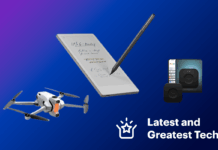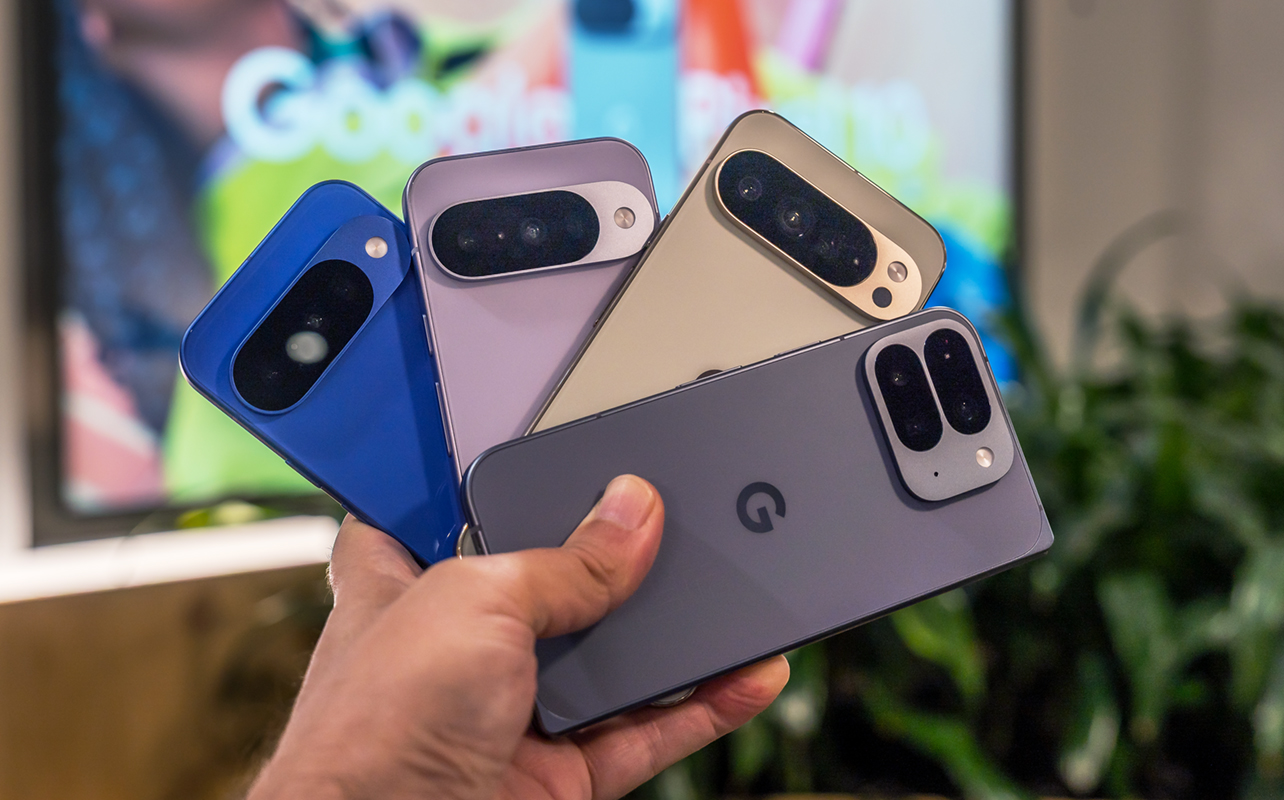
Google returns with a new slate of devices that include the Pixel 10 series phones, along with the Pixel Watch 4 and Pixel Buds 2a. Not all of these devices will be available at the same time, with launches staggering into October, but they represent the biggest hardware release for the company in 2025.
Of the phones, there are the Pixel 10, Pixel 10 Pro, Pixel 10 Pro XL, and Pixel 10 Pro Fold. I got a chance to see all of the new products at a preview event in Toronto to come away with an idea of what you can expect.
Pixel 10 Pro and Pixel 10 Pro XL
First, there’s no dramatic design shift for either of these phones. Both Pixel 10 Pro models stick with their familiar sizes—a 6.3-inch Super Actua panel for the standard Pro and 6.8-inch for the Pro XL. While they are effectively the same displays, they’re brighter this time. Upgraded stereo speakers will give media playback and speakerphone clarity a boost. Google also manages to increase battery capacity to help them last longer per charge.
At a glance, the Pixel 10 Pro camera setup looks a lot like what came before it. But beneath the surface, it’s the software and on-device AI that are doing more of the heavy lifting. Whether that results in genuinely better photos—or just a different kind of computational trickery—remains to be seen.
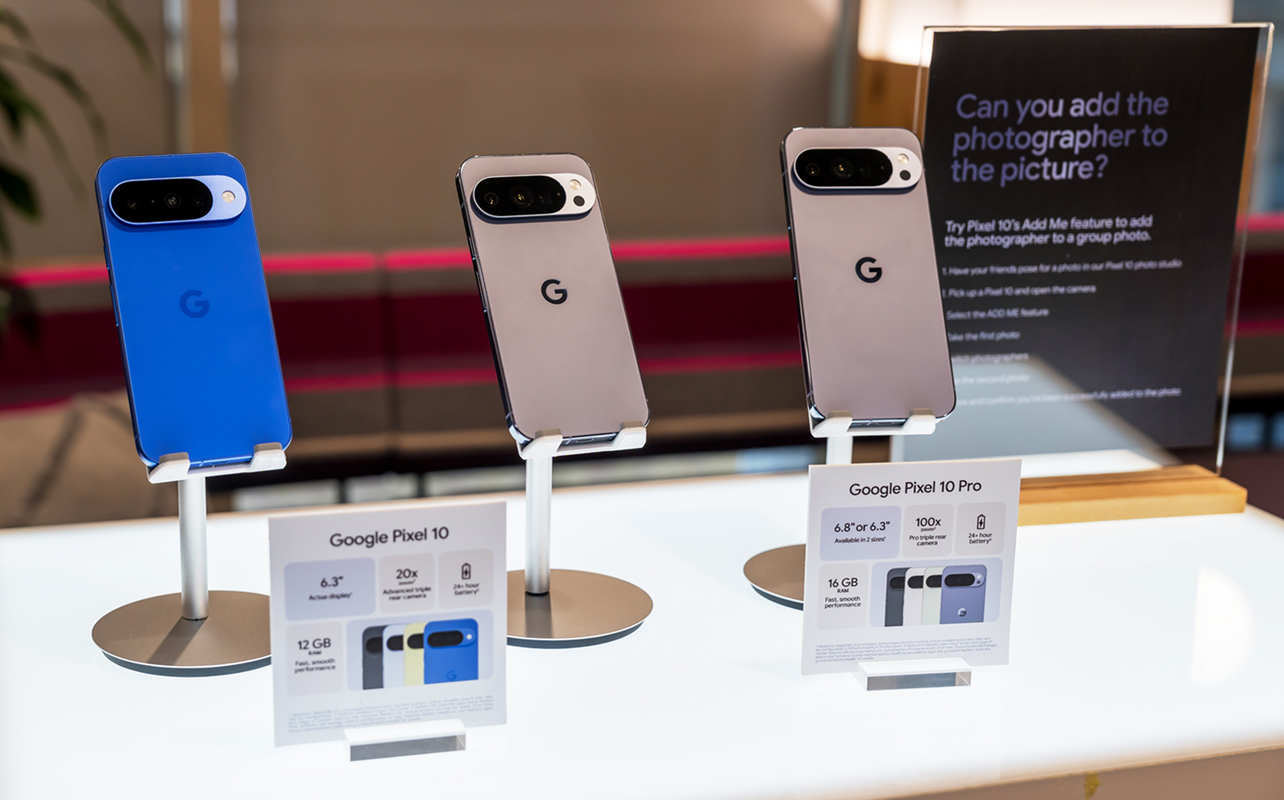
The rear camera array appears to be the same as last year’s Pixel 9 Pro lineup. There is improved optical image stabilization in the main camera that should, in theory, mean better low-light shots and steadier cinematic video. The telephoto lens will also expand hybrid zoom—or Pro Res Zoom—to go all the way to 100x and still manage results that actually look good.
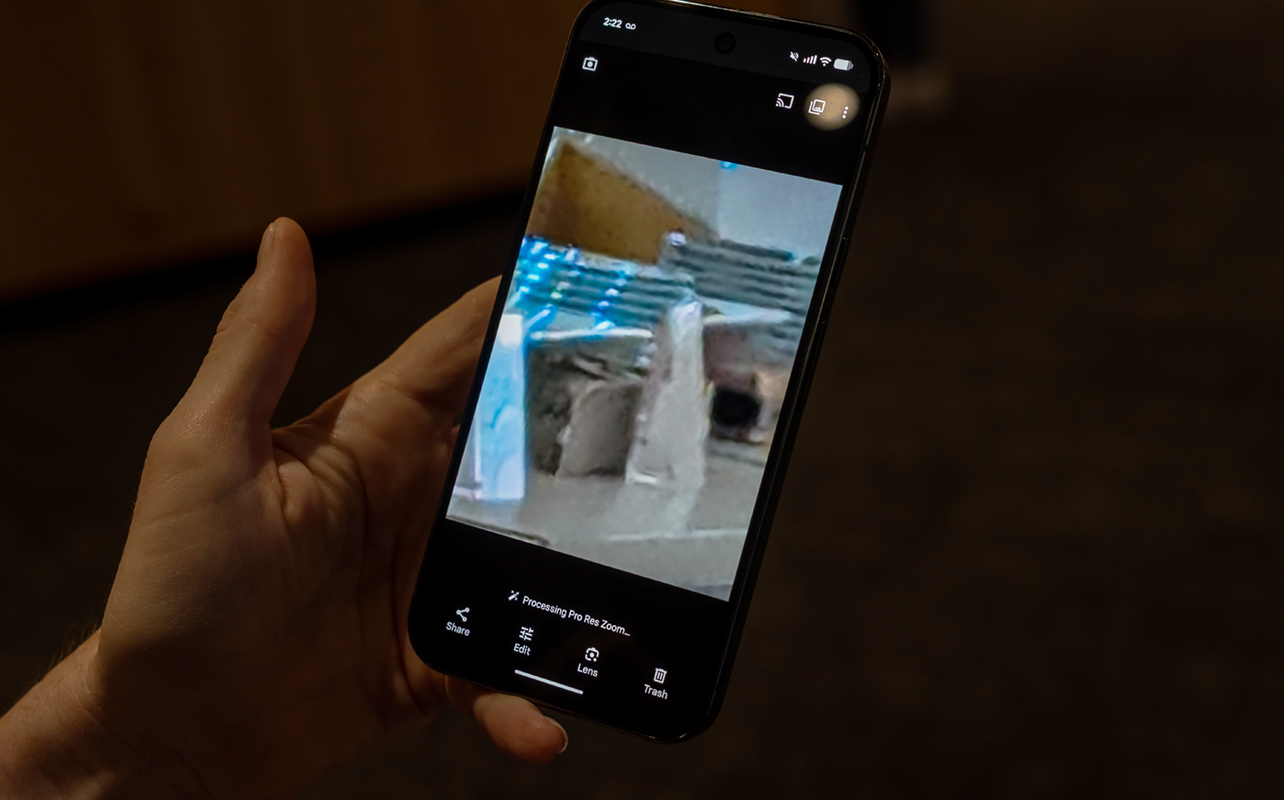
Both run on the new Tensor G5 processor, coming with 16GB of RAM and 128GB, 256GB, or 512GB of storage. Depending on region, buyers may also get a year of Gemini Advanced and 2TB of Google One storage, rounding out an AI-driven experience with added value.
These two phones will come in obsidian, porcelain, jade and moonstone. Pre-orders are open now with availability starting August 28.
Pixel 10
The Pixel 10 shares the same Tensor G5 chip as the Pro models, but comes with 12GB of RAM and either 128GB or 256GB of storage, offering slightly scaled-down specs. The most notable hardware change is the addition of a telephoto lens, marking the first time the standard Pixel gets a triple rear camera setup. However, the image sensors differ from the Pro lineup, so you won’t get the same photos here.
The main and ultra-wide cameras carry over from the Pixel 9, while the 10.8-megapixel telephoto lens is the same one used in the Pixel Fold series. Google promises sharp detail and reliable zoom through a mix of optical and Super Res Zoom for distant scenes or portrait shots.
The 6.3-inch Actua display is similar to the one on the Pixel 10 Pro, offering peak brightness and adaptive 60–120Hz refresh rate. Most Gemini AI features are supported here as well, though it lacks some of the Pro-exclusive enhancements like the expanded Super Res Zoom range and 50-megapixel portrait mode—features that weren’t available for testing.
This phone will come in obsidian, lemongrass, frost and indigo. Pre-orders are open now with availability starting August 28.
Pixel 10 Pro Fold
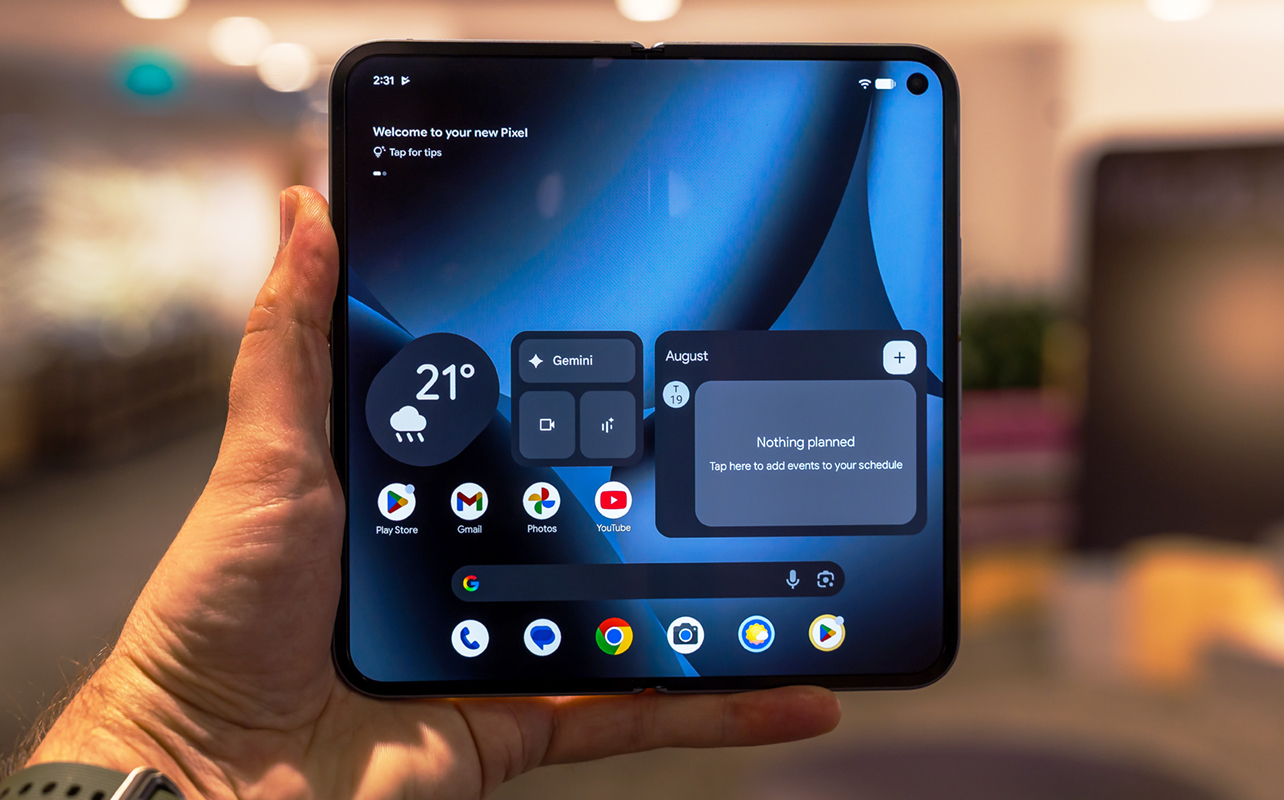
It’s a similar story with the Pixel 10 Pro Fold. The biggest hardware upgrade is a re-engineered, gearless hinge that Google says is twice as durable as before. It’s also the first foldable to achieve an IP68 rating, making it the most dust-resistant folding phone now available.
The 6.4-inch Actua front display is just slightly larger—by 0.1 inches—thanks to slimmer bezels, and it’s now protected by Gorilla Glass Victus 2. Brightness has taken a noticeable leap, peaking at 3,000 nits for better visibility in direct sunlight.
Unfold the device and you’ll find the same 8-inch Super Actua Flex display as before. The internal screen offers the same immersive experience for everything like streaming, multitasking, and productivity.
The camera layout is basically the same as the previous model. While the device runs on the new Tensor G5 chip, it doesn’t get the full suite of AI imaging features. Pro Res Zoom tops out at 20x here—no 100x zoom like on the Pixel 10 Pro—and, puzzlingly, Google still doesn’t allow shooting in full-res JPEG or RAW, forcing you to rely on pixel-binned 12-megapixel shots.
The Pixel 10 Pro Fold will come in moonstone and jade and set to become available on October 9.
Enter Pixelsnap
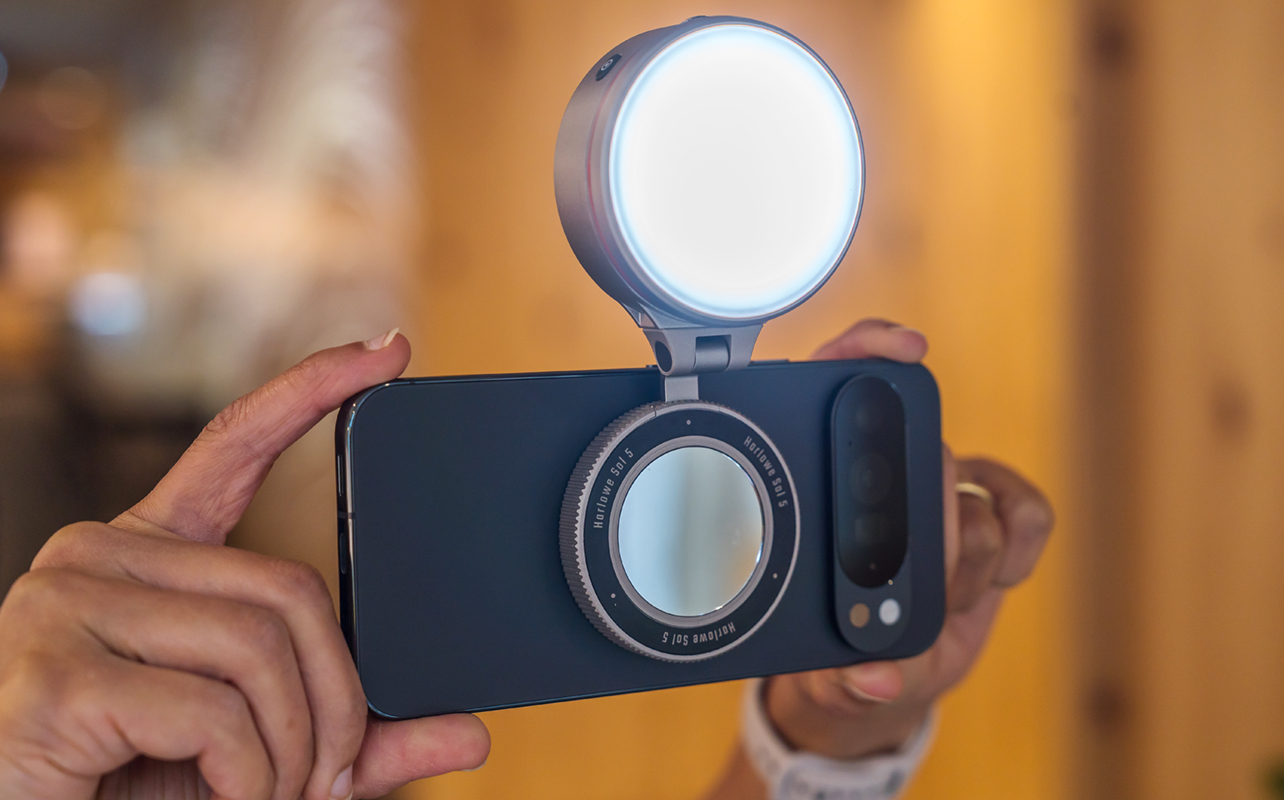
Google built its first magnetic accessory system called Pixelsnap right into the phones. It’s a clear nod to Apple’s MagSafe, but this isn’t a case-based solution like we’ve seen from Samsung or OnePlus. Every Pixel 10 comes Pixelsnap-ready out of the box, allowing accessories like chargers, stands, grips, wallets, and lights to snap directly onto the device.
Google will launch its own accessories to lead the charge, including the Pixelsnap Charger for faster Qi2 wireless charging, and a Charger with Stand that can double as a smart dock for video calls or home control. Official Pixel 10 cases are fully compatible with Pixelsnap, which means you can hot-swap accessories without pulling the case off. It doesn’t look like there’s anything stopping you from using standard MagSafe-compatible accessories either. I tried it myself, and it worked without a hitch.
Gemini and Generative AI
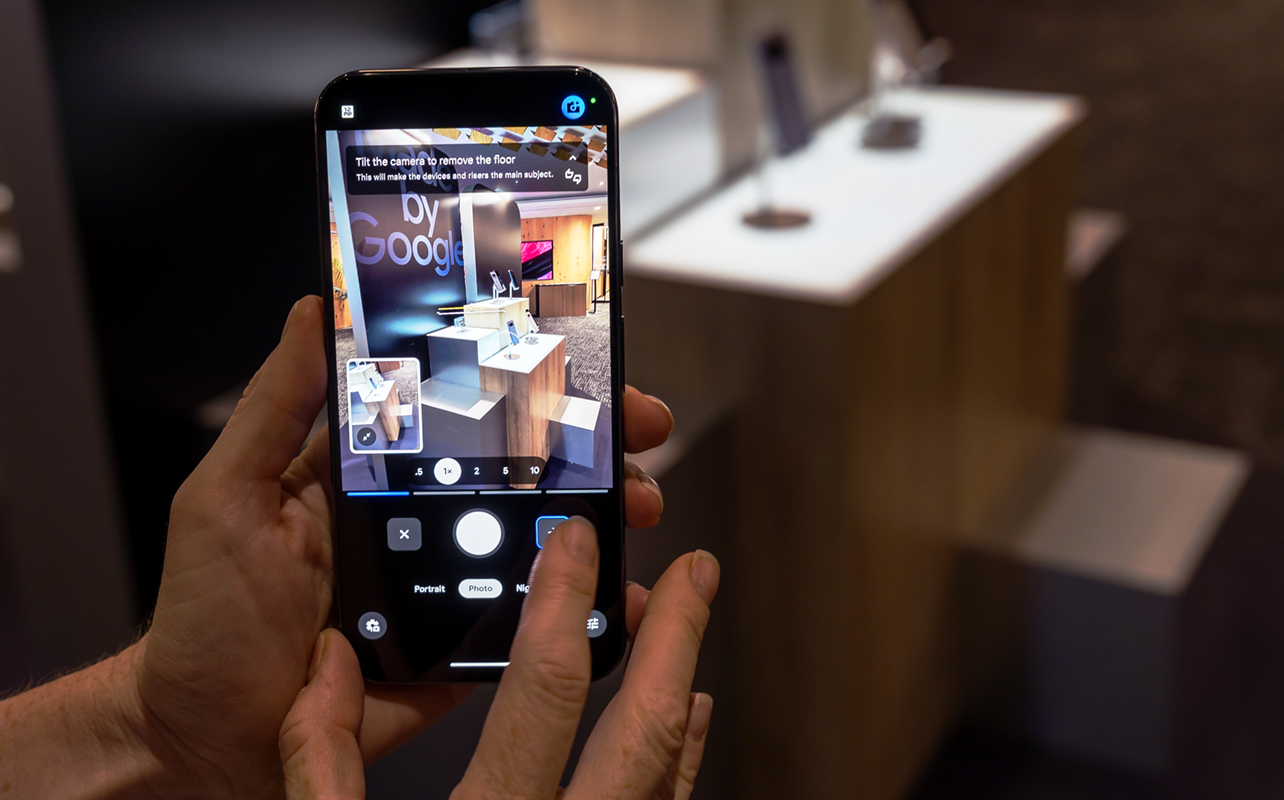
Google’s already powerful AI editing toolkit gets a broader role this year, with Gemini now stepping in to help before you press the shutter, not just after. One of the standouts is Camera Coach, real-time guidance on composition, lighting, and framing when taking photos. It analyzes the scene with live feedback to help you take a better photo—not just fix it afterward.
Similarly, Guided Frame continues to improve accessibility, helping blind or vision-impaired users capture better photos through a mix of audio cues and tactile feedback.
Auto Best Shot builds on Google’s original Best Shot feature, analyzing up to 150 frames in group photos to compile a single image where everyone looks their best. No more blinking or awkward half-smiles—at least in theory.
Then there’s Ask Photos, which brings voice commands into photo editing. You can ask Google Photos for edits like “remove the photobomber” or “erase an object,” to handle on its own. You can also tell it to adjust framing, lighting, or shadows. The idea is to simplify advanced edits through natural language, but it’s still unclear how precise it can get.

Magic Cue is a cool feature that can extract information from your phone based on correspondence in a text message. That could be flight information, a restaurant reservation, or even photos from a recent trip with friends and family. I can see this one being popular with users as it evolves.
For a limited time, Google will offer a one-year subscription to the Google AI Pro plan on all Pixel 10 Pro phones, unlocking access to Google’s next-gen AI with Gemini Pro. This includes access to Veo 3 Fast in Gemini to create videos using text-to-video prompts.
Pixel Watch 4
The centrepiece of the Pixel Watch 4 is the new Actua 360 domed screen that offers 10% more visible area and is 50% brighter. I can see this being easier to see outdoors and sunlit conditions. Protected by Gorilla Glass and framed in lightweight, aerospace-grade aluminum, it’s got a sort of durability that previous models arguably lacked. The watch is available in two sizes—41mm and 45mm—also IP68-rated and water resistant up to 50 metres.
On the software side, the new Material You 3 user interface makes notifications and tiles more colourful and simpler to interact with. Upgraded internals include a custom haptics engine and improved speaker, while the Snapdragon W5 Gen 2 chipset and new machine learning power processor make room for AI integration.

Google is claiming 25% longer battery life, delivering up to 30 hours on the smaller 41mm watch and 40 hours on the larger 45mm. But that also means a new charger—the second time in four generations Google alters its Pixel Watch charger. Older ones won’t be compatible with either of these. Part of the company’s reasoning for doing this is increasing charging speed from zero to 50% in under 15 minutes.
For health and fitness, Google AI and Fitbit come together to give the Pixel Watch 4 new capabilities like sleep stage tracking, improved skin temperature, and dual-frequency GPS for more accurate route data. The big standout is automatically detecting activity to log workouts, even if you forget to start them manually. The unknown right now is the personal AI health coach with customized fitness plans based on your habits and goals.
The Watch 4 will also have emergency satellite communication as a standalone feature. No LTE or Wi-Fi necessary to contact emergency services and share your location when completely off the grid.
The Pixel Watch 4 will come in matte black/obsidian, polished silver/porcelain, and satin moonstone/moonstone and become available October 9.
Pixel Buds 2a
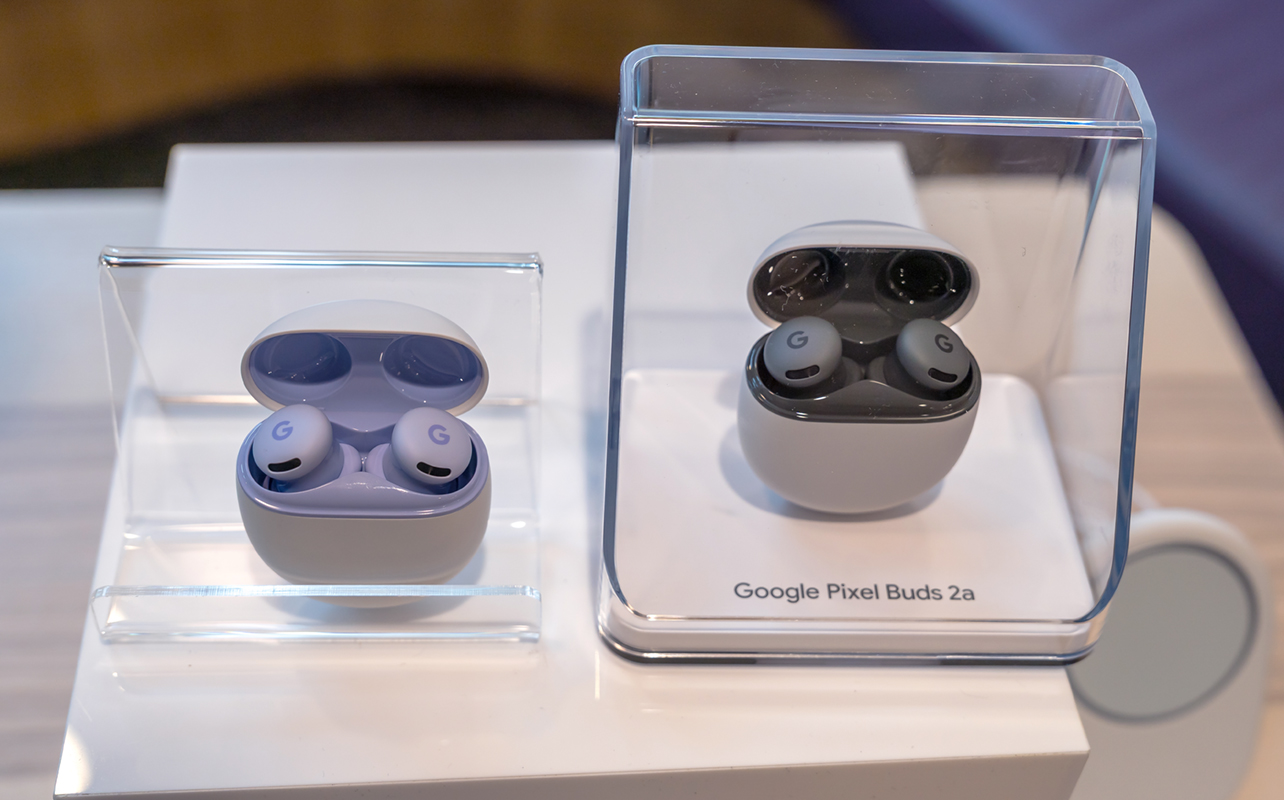
On the audio front, Google will release the Pixel Buds 2a, which borrow plenty from the Pro series but come in a lighter, smaller form factor. They feature a new twist-to-adjust stabilizer for improved comfort and are powered by the Tensor A1 chip. They will have better active noise cancellation and audio quality compared to Google’s previous entry-level earbuds. Google is also claiming seven hours of listening time per charge, and 20 hours total with the charging case.
Audio quality gets a boost from redesigned acoustics and an 11mm dynamic driver, with stereo spatial audio and a 5-band equalizer adding customization for compatible Pixel users. Calls should be clearer thanks to wind-blocking mesh and AI-based noise reduction. Hands-free access to Gemini will enable to access directions, emails, or real-time help with just about anything.
While integrating with Pixel devices will be seamless, the Pixel Buds 2a will work well with other brands as well. That includes multipoint connectivity to stay paired to two device simultaneously, as well as device tracking through Find My Device. Interestingly, the battery in the charging case is also replaceable—not a common sight for any pair of wireless earbuds.
The Pixel Buds 2a will come in hazel and iris and will be available on October 9th.
Lock in your Pixel 10 today
You can place your pre-orders for Pixel 10, Pixel 10 Pro, Pixel 10 Pro XL and Pixel 10 Pro Fold on Best Buy Canada starting from today and get up to a $500 gift card when you pre-order an unlocked Google Pixel 10 phone:
- $500 gift card with Pixel 10 Pro Fold – Available October 9
- $300 gift card with Pixel 10 Pro/ Pro XL – Available August 28
- $150 gift card with Pixel 10 – Available August 28
Check out all the latest from Google available now.




